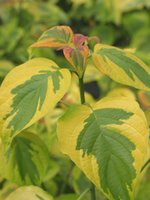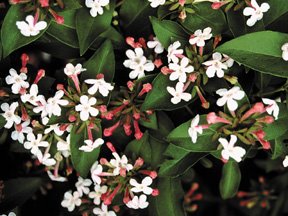
CITYLINE® VENICE Hydrangea macrophylla ‘Venice Raven’ pp#10,928 )
Hydrangea Venice is a member of the Cityline® group of dwarf Hydrangeas developed in Germany by Franz-Xaver and Konrad Rampp of the Rampp Hydrangea nursery in Bavaria. While it is common in the U.S. floral market to use chemical dwarfing agents call Plant Growth Regulators (PGRs) on Hydrangea, their use in Europe is quite restricted. These restrictions were the motivation for the Rampp brothers to hybridize genetically dwarf cultivars of hydrangea. Venice is not just a dwarf hydrangea but a dwarf with large flowers. In late spring - early summer the blooms emerge a soft green with pink edges and as the blooms age the transform entirely to a rich pink. If you prefer blue flowers, this variety is easily changed to blue if you grow the plant on acid soils or if you add Aluminum sulfate to the soil in early spring (1T per gallon of water, repeated twice). The effect is quite unique because the large blooms cover the small plant creating a mass of color. This is a zone 5-6 plant that matures to about 2-3 feet tall. The blooms and stems are both thick and hold up to the heat of day and resist wilting while other hydrangea would be flopped over or wilting. While it is not a plant for most Midwestern gardens it is a superior selection that will perform well along both the East and West Coast and in the South.




